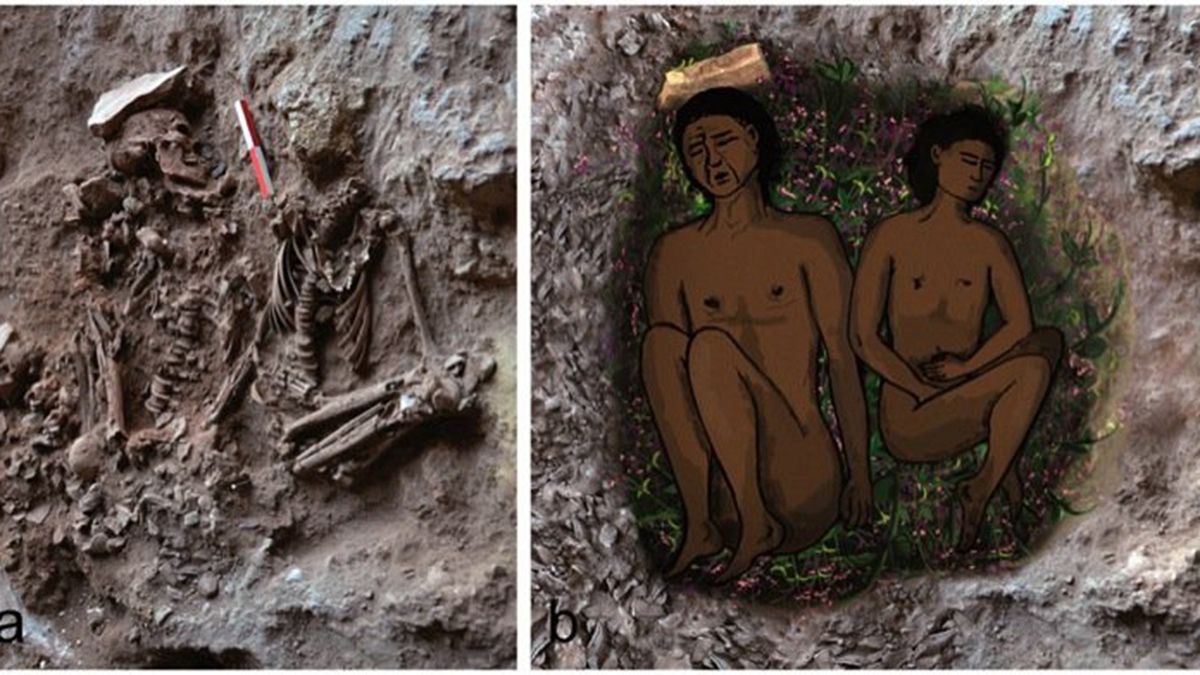Archaeologists in Israel say they have found evidence of the earliest examples of flowers being used to decorate graves at a site inhabited by a Natufian population around 12,000 years ago.
The Natufians are considered to be one of the first, if not the first, human societies to reside in permanent villages rather than live a nomadic life, according to University of Haifa archaeologist Daniel Nadel. Carbon dating revealed that the graves were between 11,700 and 13,700 years old.
The graves were discovered in the nearby Mount Carmel area overlooking Haifa, with imprints of flowering plants, such as mint and sage, stamped into the dirt of the ancient graves.
“From [the Neanderthal] example until the Natufians (a period spanning some 50,000 years) there is not one example” of flowers decorating graves, Nadel and his team wrote in a study published Monday in the journal of the Proceedings of the National Academy of Sciences.
People may have been using flowers during the entire period, but “finding such flowers is very difficult” since they decay, Nadel added.
He based the importance of the use of flowers on evidence that indicates that the place of burial was dug out and that a thin veneer of mud, a form of primitive plaster, was used to cover the sides. Plants lined the bottom of the grave before bodies were buried, and scented flowers were likely chosen as much for their aromas as their appearance.
“There are hundreds of flowers on Mount Carmel during the spring, but only a small group provide very strong fragrances. It’s impossible that the Natufians didn’t recognise the smell,” Nadel explained.
Twenty-nine skeletons, all within a 160 square-foot area, were found several years ago, but meticulous research recently led Nadel to reach his conclusions. The impression from plant stems and flowers indicated that they may have been from sage and mint and other aromatic plants.
The researched were able to identify them under a scanning electron microscope.
Nadel estimated that the burials were very ceremonial because animal bones also were found in the cave cemetery.
“They didn’t just place the bodies inside the graves and leave,” he said. “We have to envision a colorful ceremony that maybe included dancing, singing, and eating. They may have hunted a few animals and had a big meal around the graves and then threw bones or meat inside.”
Like today, the grave flowers were intended both for those who died and for the survivors.
Photo: Proceedings of the National Academy of Sciences


